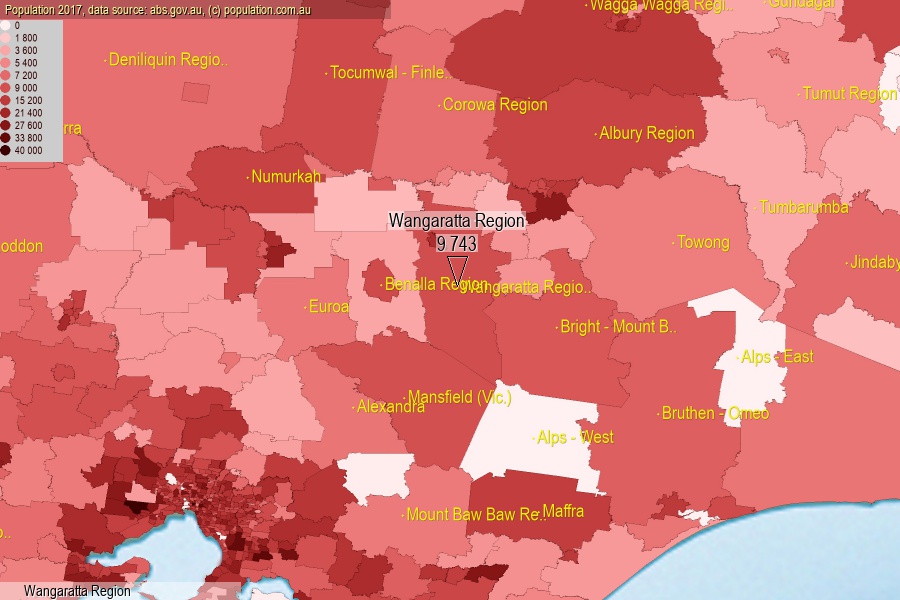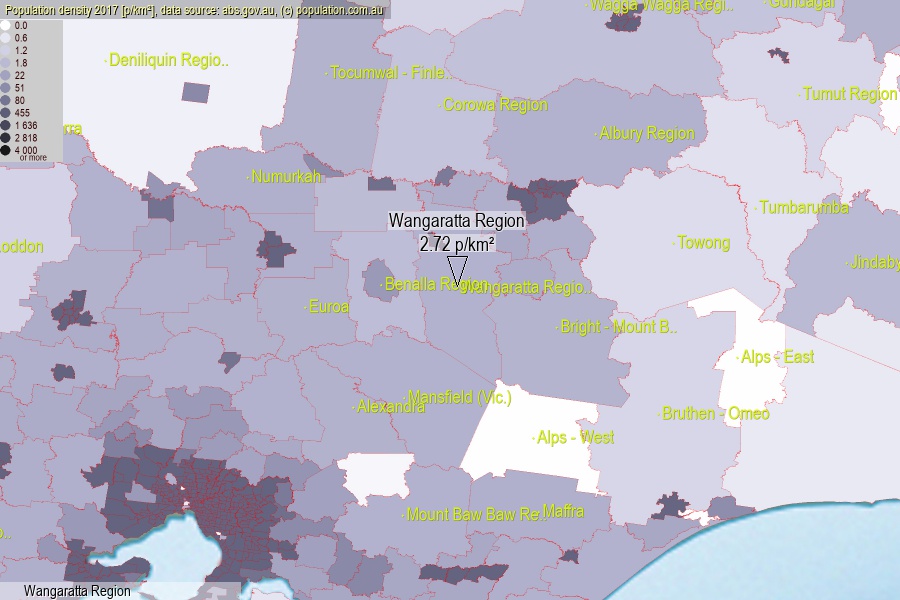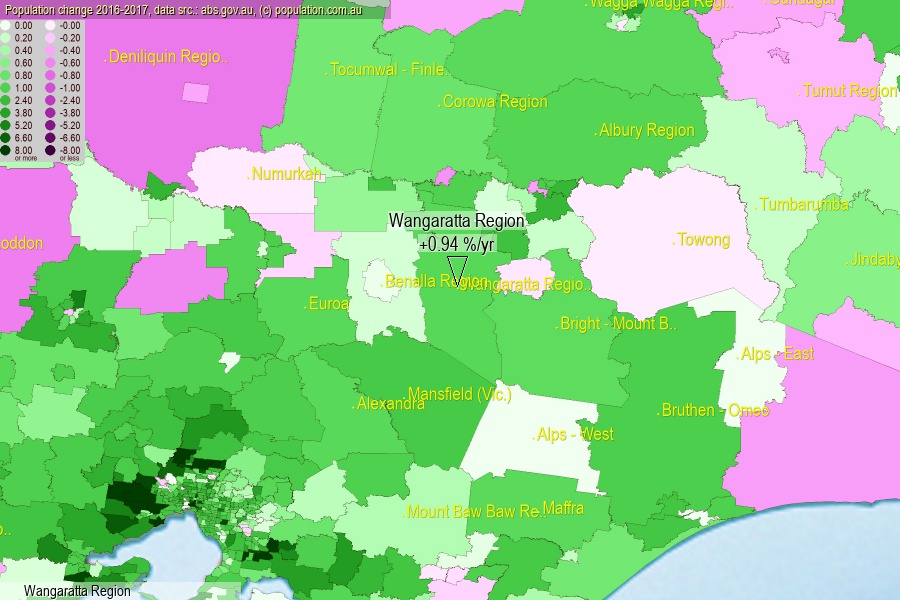 population.com.au
population.com.auLast official estimated population of Wangaratta Region (as Statistical Area Level 2) was 9 743 people (on 2017-06-30)[2]. This was 0.04% of total Australian population and 0.152% of VIC population. Area of Wangaratta Region is 3 587.50 km², in this year population density was 2.72 p/km² . If population growth rate would be same as in period 2016-2017 (+0.94%/yr), Wangaratta Region population in 2025 would be 10 503. [0]



Click to enlarge. Wangaratta Region is located in the center of the images.
Population [people], population density [p./km²] and population change [%/year] [2]
View borders » (new window) [4]
[1991-1992] -0.03 %/Yr.
[1992-1993] -0.64 %/Yr.
[1993-1994] -0.50 %/Yr.
[1994-1995] +0.10 %/Yr.
[1995-1996] +0.28 %/Yr.
[1996-1997] +0.50 %/Yr.
[1997-1998] +1.03 %/Yr.
[1998-1999] +0.71 %/Yr.
[1999-2000] +0.60 %/Yr.
[2000-2001] +0.57 %/Yr.
[2001-2002] +0.73 %/Yr.
[2002-2003] +0.26 %/Yr.
[2003-2004] +0.51 %/Yr.
[2004-2005] +1.03 %/Yr.
[2005-2006] +0.76 %/Yr.
[2006-2007] -0.04 %/Yr.
[2007-2008] +0.13 %/Yr.
[2008-2009] -0.31 %/Yr.
[2009-2010] -0.76 %/Yr.
[2010-2011] -1.40 %/Yr.
[2011-2012] +0.67 %/Yr.
[2012-2013] +0.67 %/Yr.
[2013-2014] +0.74 %/Yr.
[2014-2015] +1.00 %/Yr.
[2015-2016] +1.40 %/Yr.
[2016-2017] +0.94 %/Yr.
[0] Calculated with linear interpolation from officially estimated population
[1] Read more about SA2 and Australian Statistical Geography Standard (ASGS) on abs.gov.au
[2] Population data from Australian Bureau of Statistics (Population and density: 2017; change: 2016-2017)
[3] Digital Boundaries: Australian Statistical Geography Standard (ASGS) 2016.
[4] Border coordinates are simplifyed using Ramer-Douglas-Peucker algorithm.